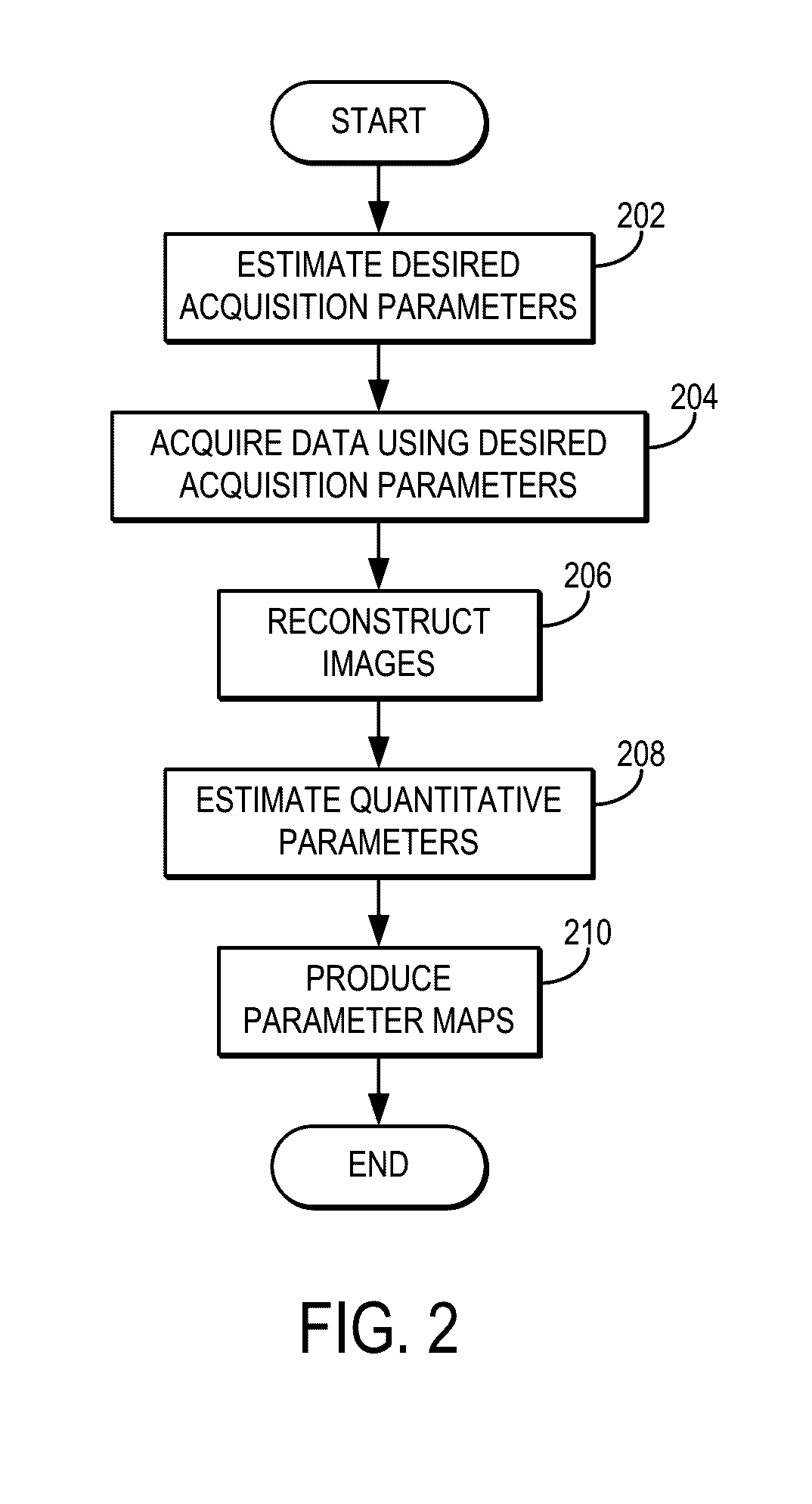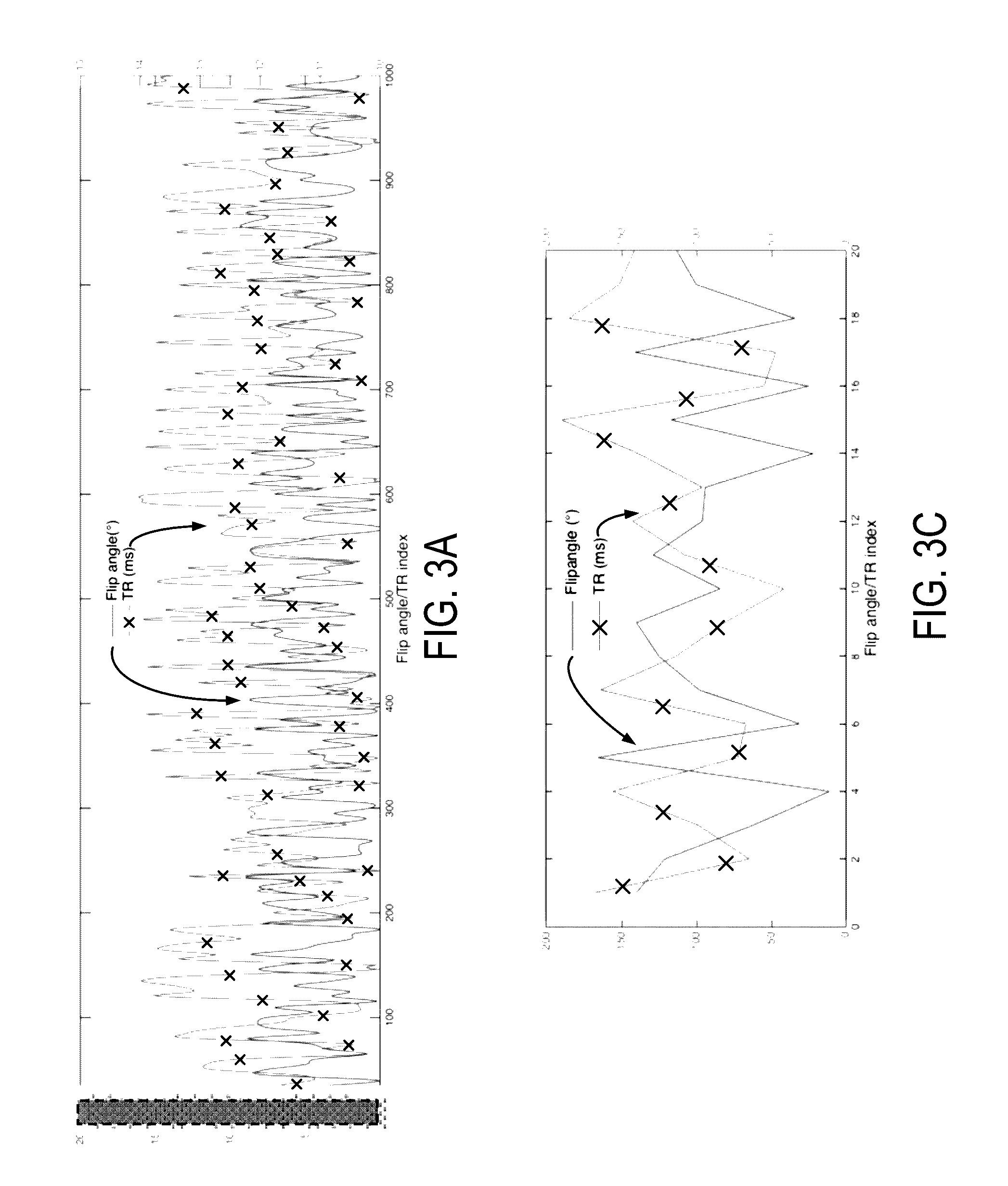3D Balanced EPI Magnetic Resonance Fingerprinting
a magnetic resonance fingerprinting and epi magnetic resonance technology, applied in the field of magnetic resonance imaging systems and methods, can solve the problems of limiting the widespread clinical use of mrf techniques, requiring a complicated image reconstruction algorithm, and not being available on many clinical systems
- Summary
- Abstract
- Description
- Claims
- Application Information
AI Technical Summary
Benefits of technology
Problems solved by technology
Method used
Image
Examples
Embodiment Construction
[0024]Described here are systems and methods for implementing Magnetic Resonance Fingerprinting (MRF) using an optimized, fully-refocused 3D balanced-EPI (b-EPI) pulse sequence. The systems and methods may also include implementing pulse sequences that rapidly acquire large volumes of k-space data, including echo-planar imaging (“EPI”) and segmented EPI sequences.
[0025]Referring specifically now to FIG. 1, an example pulse sequence diagram of a modified spin-echo EPI technique for use in accordance with the MRF approach of the present disclosure, is shown. Specifically, for each TR, a selective RF excitation pulse 102 that is coordinated with a 2D phase encoding gradient pulse 104 and a 3D phase encoding gradient pulse 106 are applied to position encode the nuclear magnetic resonance (NMR) signal 108 along one direction in the slice. A series of readout gradient pulses 110 with alternating polarity are played along the readout direction to produce a series of spin-echo signals 108. ...
PUM
 Login to View More
Login to View More Abstract
Description
Claims
Application Information
 Login to View More
Login to View More - R&D
- Intellectual Property
- Life Sciences
- Materials
- Tech Scout
- Unparalleled Data Quality
- Higher Quality Content
- 60% Fewer Hallucinations
Browse by: Latest US Patents, China's latest patents, Technical Efficacy Thesaurus, Application Domain, Technology Topic, Popular Technical Reports.
© 2025 PatSnap. All rights reserved.Legal|Privacy policy|Modern Slavery Act Transparency Statement|Sitemap|About US| Contact US: help@patsnap.com



